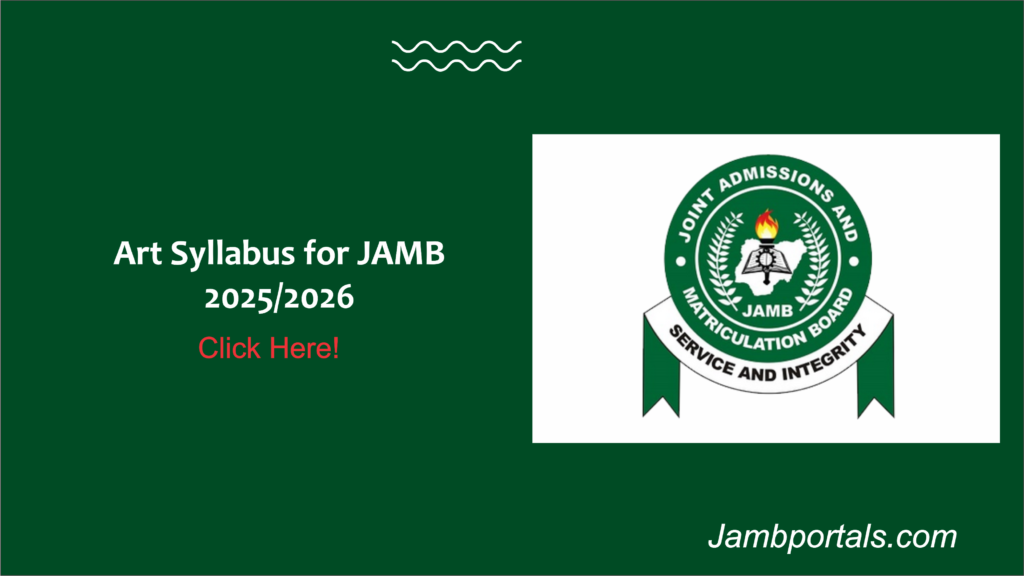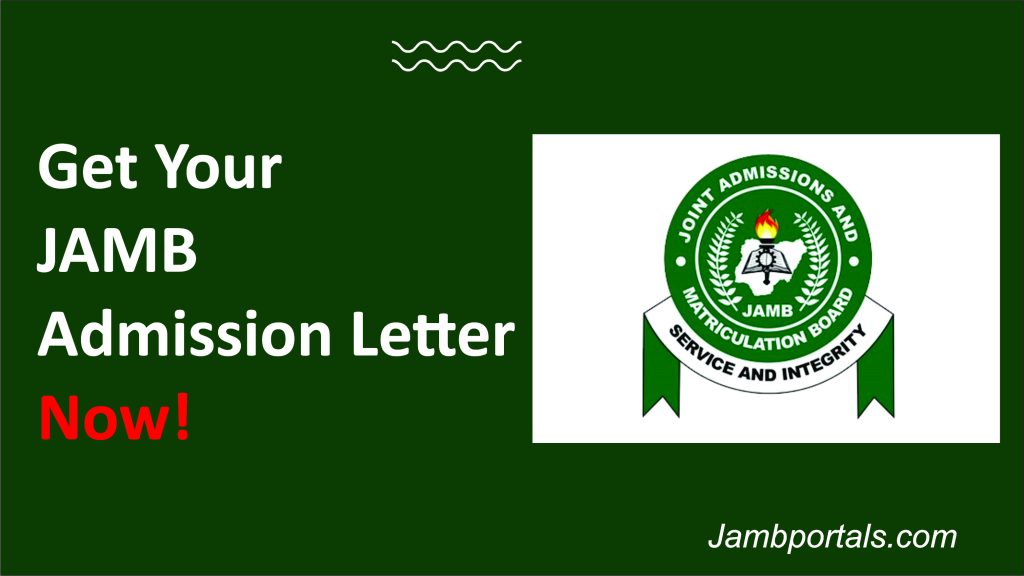
You can now download the real and up to date Joint Admissions and Matriculation Board (JAMB) Art syllabus for the 2025/2026 JAMB UTME. The syllabus contain topics and content areas candidates should focus on to excel in the examination.
| Examination Type | UTME / Direct Entry |
| Examination Year | 2025/2026 |
| Syllabus | Art |
| File Format | |
| File Size | 136 KB |
The JAMB Syllabus for Art is typically arranged into different sections, each corresponding to specific areas within the field of agriculture.
However candidates are encouraged to utilize a variety of study resources, including textbooks, reference materials, and online resources aligned with the JAMB Syllabus for Art.
General Objectives
The aim of the Art syllabus is to prepare the candidates for the forthcoming examination. It is designed to test their achievement of the course objectives, which are to:
- exhibit knowledge of the fundamental elements, principles and terminologies of art
- show knowledge of historical dimensions of art with emphasis on Nigerian arts and crafts
- demonstrate knowledge of artistic techniques, processes, the use of materials and maintenance of tools and equipment
- display aesthetic awareness of the environment, meaning and functions of art in society.
Recommended: Free Download of the JAMB 2025/2026 Syllabus PDF: Syllabus System (IBASS)
JAMB Syllabus for Art 2025
| TOPICS/CONTENTS/NOTES | OBJECTIVES |
|---|---|
| SECTION A 1. CLASSIFICATION OF ART: a. Visual Arts: (Fine and Applied Arts) b. Performing Arts: (Music, Dance and Drama) c. Literary Arts: (Poetry, Prose, Recital) etc. | Candidates should be able to: i. differentiate between the three branches of art; |
| 2. ELEMENTS AND PRINCIPLES OF DESIGN: a. Elements: line, colour, shape, form, texture, tone, value, space etc. b. Principles: balance, rhythm, proportion, harmony, contrast, repetition, dominance, variety, etc. | ii. identify the elements of design; iii. analyse the principles of design; |
| 3. ART TERMS: Pigments, motif, greenware, armature, silhouette, chiaroscuro, cire-perdue, terracotta etc. | iv. identify art terms; v. link the terms to their areas of art; vi. use the terms in analyzing artworks. |
| SECTION B 1. HISTORICAL DIMENSIONS OF ART: a. Prehistoric, Greek and Roman Art; b. Medieval Art: architecture, surface decorations and calligraphy; c. Renaissance Art and Artists: Giotto Di Bondone, Michelangelo Buonarroti, Leonardo da Vinci and Raphael (Raffaello Santi); e.t.c. d. 19th and 20th Century Art Movements; Impressionism, Realism, Futurism, Cubism, Bauhaus, Pop art, Abstract Expressionism and Fauvism. | Candidates should be able to: i. compare their materials, styles and techniques; ii. classify the periods and styles with emphasis on architecture, surface decoration and calligraphy; iii. compare the artists, their works and styles; iv. differentiate between the various art movements; v. analyze their styles techniques, innovations and influences; |
| 2. TRADITIONAL AFRICAN ART: Egypt, Ashanti, Dogon, Mossi, Fon, Senufo, Bambara, Mende, Kissi, Bamileke and Bakumba. | vi. categorize works in terms of style, materials and locations; |
| 3. TRADITIONAL NIGERIAN ART: Nok, Igbo-Ukwu, Ife, Benin, Esie, Igala, Jukun, Akwanshi, and Mbari. | vii. analyze the works in terms of functions, characteristics and locations; |
| 4. NIGERIAN CRAFTS: Pottery, woodworks, cloth-weaving, carving, leather works, metal works, beadworks, body decoration, mat and cane weaving. | viii. trace the origins, locations and styles; |
| 5. DEVELOPMENT IN CONTEMPORARY NIGERIAN ARTS AND ARTISTS: a. Art Schools: Zaria, Nsukka, Osogbo group etc. b. Nigerian artists and art educators; Aina Onabolu, Ben Enwonwu, S. I. Wangboje, Jimoh Akolo, Dele Jegede etc. c. Museums, galleries and art centres; d. Art institutions, cultural art centres, national art organizations – Nigerian Society for Education through Arts (NSEA), Society for Nigerian Artists (S.N.A), National Council for Arts and Culture (N.C.A.C), etc. e. Major Festivals: Argungu Fishing Festival, Eyo, Egungun, Iri-ji (New Yam), Durbar, Igue, Ekpo, Odo, etc. | ix. determine the influence of the art schools and groups towards the development of art; x. assess the artists in terms of their works, specializations, techniques and styles; xi. analyze the functions of museums, galleries, art centres and art institutions; xii. evaluate their impact on the development of art; xiii. assess their roles and functions; xiv. examine the characteristics of major festivals of art and culture. |
Download JAMB 2025 Syllabus for Art
Click the button below to download the full 2025 Art syllabus on your smartphone or laptop.
FAQs
How many subjects do you write in JAMB?
4 subjects. English language is compulsory for all candidates.


